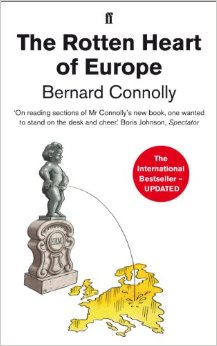
FRA is joined by Yra Harris to discuss the current state of bond, currency, equity, and commodity markets.
Yra Harris is a recognized Trader with over 40 years of experience in all areas of commodity trading, with broad expertise in cash currency markets. He has a proven track record of successful trading through a combination of technical work and fundamental analysis of global trends; historically based analysis on global hot money flows. He is recognized by peers as an authority on foreign currency. In addition to this he has specific measurable achievements as a member of the Board of the Chicago Mercantile Exchange (CME). Yra Harris is a Registered Commodity Trading Advisor, Registered Floor Broker and a Registered Pool Operator. He is a regular guest analysis on Currency & Global Interest Markets on Bloomberg and CNBC.
Yra highly recommends reading The Rotten Heart of Europe – send an email to rottenheartofeurope@gmail.com to order
BOND AND CURRENCY MARKETS
We’re just coming off a Fed meeting in which they called the first quarter transitory, which means they’re not worried about it, yet they made no change to the current policy of maintaining the Fed balance sheet. The $4T will remain at $4T, and whatever expires will be renewed by the purchasing of whatever duration expires by the new instrument. With the Fed raising rates, even though GDP turned out to be low, there are other elements that are slowing down. Right now, if the Fed was looking to start unwinding its balance sheet, which would mean a dynamic act of actually starting to sell some of their assets, the first move would be for the curve to start to steepen. A lot of potential buyers would step back, and market would say ‘show me what you’re going to be doing’. You’re going to have others trying to front run the Fed, because the Fed model says there should be no problem. But what the Fed doesn’t model is the effect on the marketplace, and they’re hoping the marketplace allows them to do this. What the Fed is worried about is whether the market will be cooperative with what they want to do. It’s why they don’t want to acknowledge any pre-program. It’s the same problem the ECB has. A lot of people front run the ECB, and the market tries to rush ahead of it.
If the Fed tries to unwind by an aggressive type of action, which is selling the debt to unwind in a quicker way, the long end of the curve will go up higher than the short end in the immediate period, because the market will race ahead of them. We don’t know how the curve ought to be steepening in that environment. With the Fed doing nothing but raising rates, the curve has actually flattened quite a bit.
It’s interesting how the US 2-10 curve, the ‘investor’s curve’, just mirrors the German 2-10 despite negative rates in Germany. These two just continuously mirror each other. Ultimately, if the Fed is too aggressive in unwinding the balance sheet, that’ll tip us into a very flattening curve, which will fly in the face of what we think should happen. There’s going to be all sorts of things here because the market is going to set the tone. If the Fed were to actually embark upon an unwinding, the market will then set the tone unlike QE. Right now the curves are telling us that the Fed is a little too aggressive, and that’s why it’s flattening.
Everything is ‘transitory’. The Fed is not going to do this in a vacuum. If Marine Le Pen wins the election and throws the entire financial system into turmoil, the Fed has to change their perspective too. So we have a lot of things in play here. Yellen will be very reticent to raise rates too quickly; they want to see more from Trump and Congress before they get more aggressive.
OTHER FACTORS THAT COULD INFLUENCE USD AND BOND MARKETS
In the first quarter, central bank buying totaled a trillion Dollars in assets. The amount of liquidity is huge. The Dollar and all currency markets are all relative value plays. Even if everyone is moderately up, some are doing better and offering a higher return, but the US equity market is close to what we may discern as full value based on historical metrics. In a fairly stable world, the US is not where we should be chasing assets right now. The Mexican Peso and stock market is probably the most undervalued asset class in the world. People are pushing India as a great place to invest, but India has a lot of enormous infrastructural and political problems that they’re trying to work on.
The best place for investment right now is Germany. If the Germans agreed to do whatever it takes to hold the EU project together, you’ll experience some inflation in Germany but the currency will be weak. On the other hand, if things got so bad that the whole EU project fell apart, you’re buying Germany with a low currency. If it were to pull out for some reason, German assets would convert to Deutschmarks. Germany could be bullish on assets, and you get the use of a weak currency. We get a cheaper currency with a much stronger economy. This is not an easy world to invest in. The political risks are phenomenally great; Italy is still a massive problem for Europe, Greece has not gone away, and there’s no trade in Japan’s JJB.
When you look at how central banks have single handedly destroyed the bond market, you don’t have to look very far. The Fed may be too self-confident, but their models have no respect for market reaction and they still think they can extract themselves with very little pain. If they deem to shrink their balance sheet, they’re going to find out the pent up power of the market and its ability to cause them a lot of pain.
THE GLOBAL MINSKY MOMENT
At the end of the day, interest rates aren’t high enough to attract people into leaving the comfort zone. They won’t let interest rates go high enough to ease some of this burden, so people take comfort in the equity market. Minsky must be spinning in his grave that we’ve gotten to this point and it’s so controlled by the central bank. The central banks have created a global Minsky moment because everyone is complacent. It’s everything approaching the Minsky moment because where are you going to go? There is a cost to everything; just because you don’t see it today doesn’t mean it won’t pop up tomorrow. This is all the outcome of central banks not knowing when enough is enough. QE1 in the US was absolutely needed to prevent a mass liquidation of US assets, but after that it stopped making sense. QE2 and QE3 were totally unnecessary and has created this mess that we are now in.
SILVER-COPPER RATIO TO EQUITY MARKET
Gold has depreciated against silver significantly over the last few weeks, while the equity markets have been holding up pretty strong. Usually silver tends to outperform because it also has industrial usage. Copper has a tendency to outperform the other metals when the equity markets are doing well, because people correlate it to the economy. Copper has been dramatically outperforming silver over the same period, which is highly unusual when the equity markets are holding.
The Chinese have gigantic warehouses full of commodities, which wreaks havoc on that market. You do hear some bad things about what’s happening in the Chinese economy. If that’s the case, commodity prices may come under pressure as some of the lenders call the collateral and start pushing it on the market to raise some cash to secure loans.
INVESTMENT POTENTIAL OF COMMODITY ASSET CLASS
The agricultural sector is a good sector to be in. We have massive crops around the world and prices are relatively strong historically. We’ve had a bit of a rally in the agricultural products in the last few weeks, but it’s something to pay attention to. You should take a look and see if there’s an opportunity for you. The one thing that we’re sure of is that China and India need grain, end of story. As their income levels move up, agricultural products and higher protein products are in demand.
The great thing about the commodity market, unlike the commodity markets which are manipulated, is that farmers and miners react to price. The markets do work.
Abstract by: Annie Zhou <a2zhou@ryerson.ca>
LINK HERE to download the podcast in MP3




 05/06/2017 - The Roundtable Insight: Yra Harris On The Bond, Currency, Equity and Commodity Markets
05/06/2017 - The Roundtable Insight: Yra Harris On The Bond, Currency, Equity and Commodity Markets



